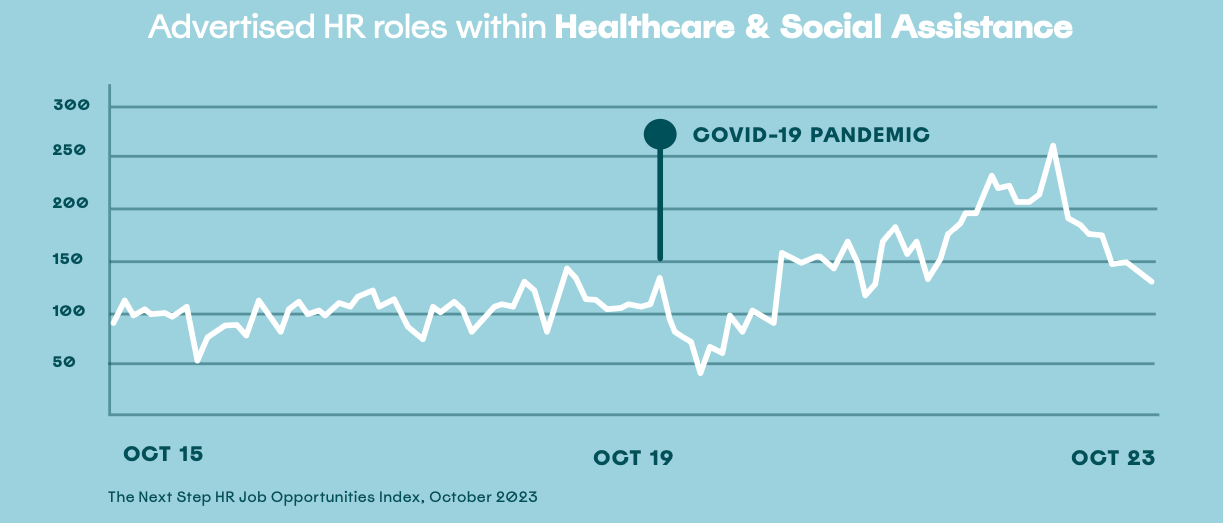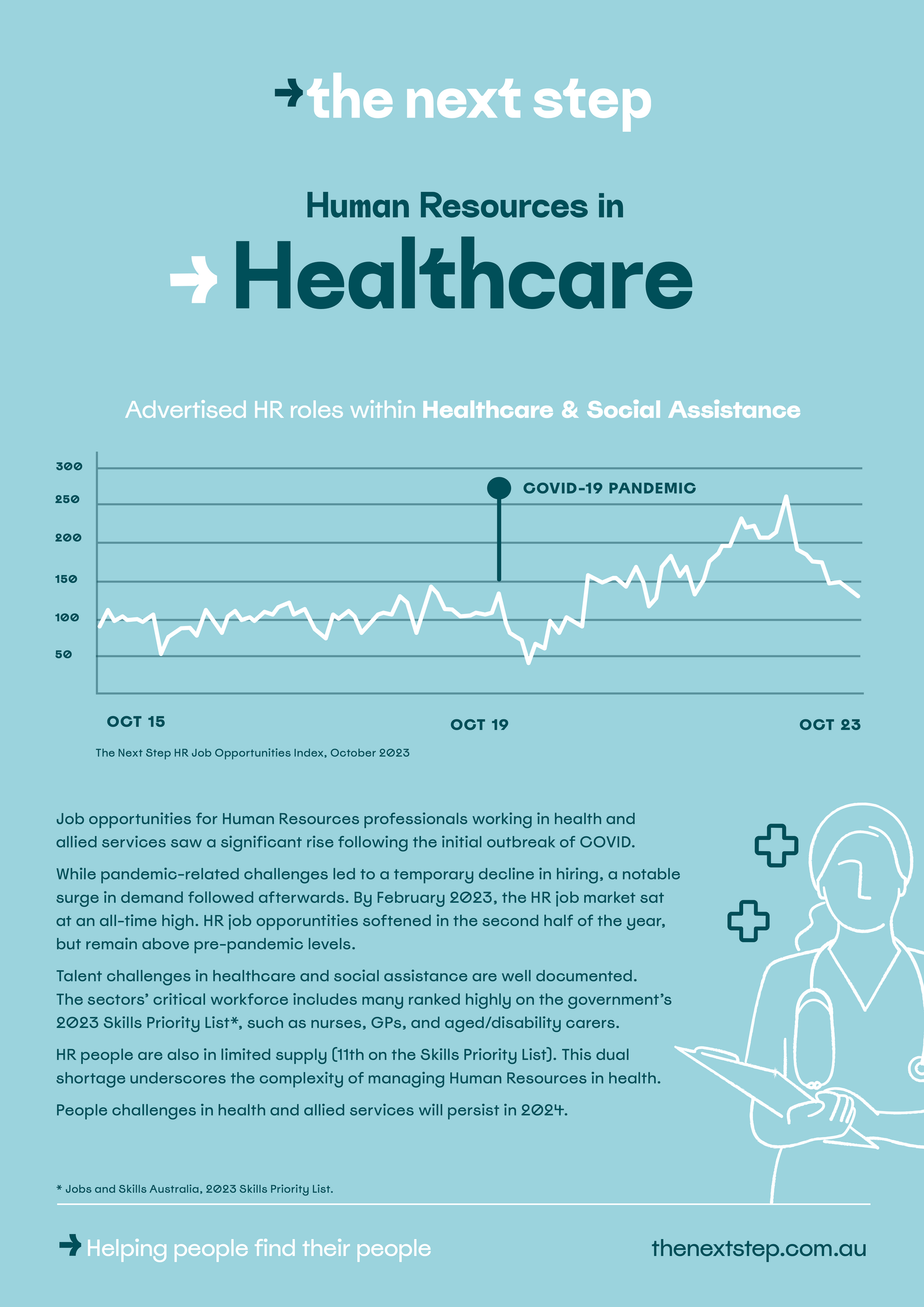Human Resources in Healthcare
Job opportunities for Human Resources professionals working in health and allied services saw a significant rise following the initial outbreak of COVID.
While pandemic-related challenges led to a temporary decline in hiring, a notable surge in demand followed afterwards. By February 2023, the HR job market sat at an all-time high. HR job opporuntities softened in the second half of the year, but remain above pre-pandemic levels.
Talent challenges in healthcare and social assistance are well documented. The sectors’ critical workforce includes many ranked highly on the government’s 2023 Skills Priority List*, such as nurses, GPs, and aged/disability carers.
HR people are also in limited supply (11th on the Skills Priority List). This dual shortage underscores the complexity of managing Human Resources in health. People challenges in health and allied services will persist in 2024.

* Jobs and Skills Australia, 2023 Skills Priority List.

On the Horizon
Record investment in heath and allied sectors, while necessary and positive, stems from a previously low base of funding. As these sectors mature, driven by investment in systems and digital transformation, HR professionals must upskill to manage the evolving workforce and technological advancements effectively.
In 2024, HR/P&C teams will also need to focus on employee wellbeing amidst burnout concerns,
while also navigating a raft of legislation changes and industrial relations reforms. Pay pressures and skill shortages will continue to affect the sector.
Attracting and retaining people, whilst future workforce planning will be top of mind for many.

Author: Craig Mason Date published : 22-Aug-2023




